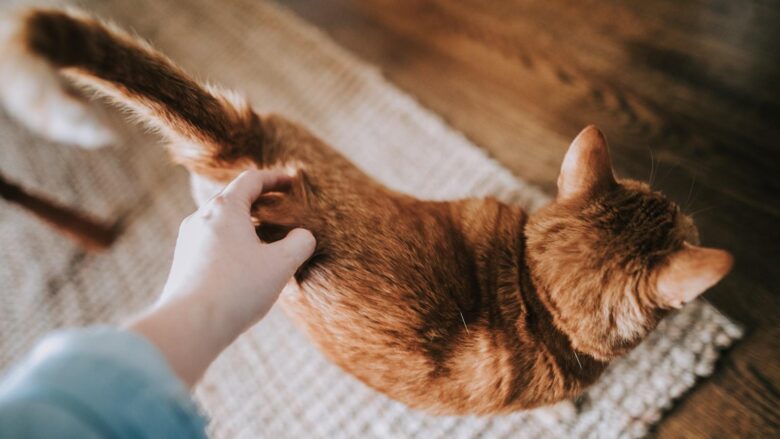Cats have a reputation for being independent and aloof creatures, but with the right approach, they can be trained to form strong bonds with their humans. The art of cat training involves using positive reinforcement techniques to encourage desired behaviors and foster a deeper connection between feline and owner. By understanding the psychology of cats and implementing effective training methods, you can unlock the potential for a harmonious and rewarding relationship with your furry companion.
– Understanding the Basics of Positive Reinforcement in Cat Training
Cat training can be a rewarding experience for both you and your furry friend. By using positive reinforcement techniques, you can build a strong bond with your cat while encouraging good behavior. Positive reinforcement involves rewarding your cat for desirable actions, which can help them learn and retain behaviors more effectively than punishment-based methods.
One key principle of positive reinforcement is timing - it’s crucial to reward your cat immediately after they display the desired behavior. Whether it’s a tasty treat, a favorite toy, or verbal praise, your cat will associate the reward with the behavior, making them more likely to repeat it in the future. Consistency is also key – be sure to reward your cat every time they exhibit the desired behavior to reinforce the positive connection.
When training your cat using positive reinforcement, it’s important to keep sessions short and enjoyable. Cats have short attention spans, so keeping training sessions brief (around 5-10 minutes) can help prevent boredom and frustration. Additionally, make sure to use a calm and encouraging tone during training to create a positive atmosphere that your cat will respond to positively.
– Developing Clear Communication Channels with Your Feline Companion
Cats are known for their independence and mysterious ways, but developing clear communication channels with your feline companion is essential for building a strong bond. Positive reinforcement is key in cat training, as it helps reinforce desirable behaviors and fosters a positive relationship between you and your cat. By understanding your cat’s body language and vocalizations, you can effectively communicate with them and create a harmonious household.
Here are some tips for developing clear communication channels with your feline companion:
- Use consistent cues and signals to reinforce desired behaviors.
- Pay attention to your cat’s body language and meows to understand their needs and emotions.
- Be patient and understanding when training your cat, as every feline companion is unique.
Remember, building a strong bond with your cat takes time and effort, but the rewards are well worth it. By using positive reinforcement and clear communication channels, you can create a deeper connection with your feline friend and strengthen your relationship for years to come.
– Tips for Strengthening Trust and Building a Solid Bond with Your Cat
Creating a strong bond with your cat is essential for a happy and healthy relationship. Trust is the foundation of this bond, and positive reinforcement is key to building it. Here are some tips for strengthening trust and forging a solid bond with your feline friend:
- Respect their space: Cats are independent creatures, and they appreciate having their own territory. Respect their boundaries and allow them to come to you on their terms.
- Consistency is key: Establish a routine and stick to it. Cats thrive on structure and predictability, so make sure to feed them at the same time each day and schedule regular playtime sessions.
- Use rewards and praise: Positive reinforcement is the most effective way to train a cat. Reward good behavior with treats, praise, and petting to show them that their actions are appreciated.
– Implementing Reward Systems to Encourage Desired Behaviors
Training your cat can be a fun and rewarding experience for both you and your feline friend. By implementing reward systems, you can encourage the desired behaviors in your cat while strengthening the bond between the two of you.
One of the keys to successful cat training is using positive reinforcement. Instead of punishing your cat for unwanted behaviors, focus on rewarding them for good ones. This will help your cat learn what is expected of them and motivate them to continue exhibiting those behaviors.
When using reward systems, it’s important to be consistent and patient. Rome wasn’t built in a day, and neither is a well-trained cat. Take small steps, set achievable goals, and celebrate each success along the way. With time and dedication, you’ll see your cat’s behavior improve and your bond with them grow stronger.
– Addressing Challenges in Cat Training and Adjusting Your Approach
Training cats can be a challenging yet rewarding experience for both you and your feline friend. It’s important to approach cat training with patience, understanding, and a positive mindset. Addressing the challenges that come with training a cat can help you adjust your approach and build a stronger bond with your pet.
One key aspect of successful cat training is using positive reinforcement techniques. This involves rewarding good behavior with treats, toys, or affection to encourage your cat to continue exhibiting that behavior. By focusing on positive reinforcement, you can create a positive association for your cat and strengthen your bond with them.
It’s also important to consider the individual personality and preferences of your cat when training them. Each cat is unique, so what works for one cat may not work for another. Take the time to observe your cat’s behavior, learn what motivates them, and tailor your training approach to suit their needs. By adjusting your training methods to fit your cat’s temperament, you can set them up for success and make the training process more enjoyable for both of you.
In Summary
In conclusion, mastering the art of cat training is not just about teaching your feline friend a few tricks, but rather about building a strong bond based on trust and positive reinforcement. By approaching training with patience, understanding, and a willingness to learn from each other, you can create a mutually rewarding relationship that will last a lifetime. So remember, whether you’re working on basic commands or more advanced behaviors, the key to success lies in fostering a connection built on love, respect, and a shared appreciation for the unique bond between human and cat. Happy training!



